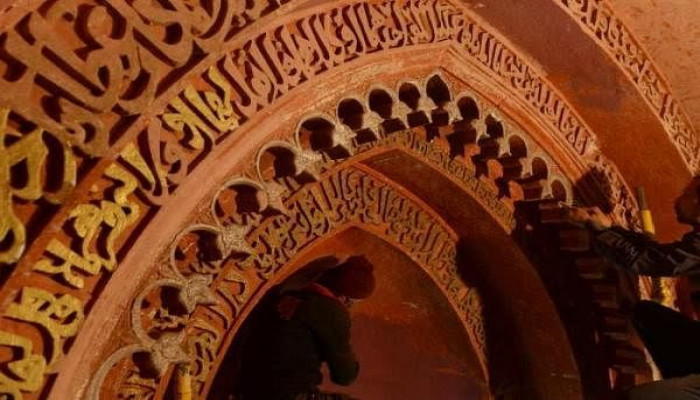Delhi's Nizamuddin Basti gets two UNESCO recognitions
- In Reports
- 01:18 PM, Dec 03, 2021
- Myind Staff
Urban revitalisation and conservation efforts initiated at Nizamuddin Basti, one of the oldest and historical settlements in the national capital, has received twin UNESCO Asia-Pacific Awards for Cultural Heritage Conservation 2021. The conservation initiative at Nizamuddin bagged the Award of Excellence and Special Recognition for Sustainable Development Award.
The conservation project is the only award-winning entry from India. Conservation efforts at Nizamuddin Basti are being undertaken by the Aga Khan Trust for Culture in partnership with the South Delhi Municipal Corporation, Archaeological Survey of India, Delhi Urban Heritage Foundation and the Dargah Committee and resident community groups of Hazrat Nizamuddin Basti since 2007.
According to the citation, the Nizamuddin Basti project is awarded for its “outstanding achievement in placing heritage at the heart of the sustainable development agenda” and “through an innovative People-Public-Private partnership model, the project overcame major socio-economic challenges and improved health, education and well-being, particularly for women and youth”.
After migration from Badayun in UP sometime in the 1240s, noted Sufi saint Hazrat Nizamuddin Auliya settled in a Delhi village Ghiyaspur, located on the tributary of River Yamuna, and later buried in the vicinity. The settlement that developed around his shrine came to be known as Nizamuddin Basti.
Ratish Nanda, CEO of Aga Khan Trust for Culture India said, “We have tried to leverage cultural assets for socio-economic development of the community. The monuments have been coupled with performance areas and water-harvesting facilities have been created near the baolis. Through our efforts, we have demonstrated that conservation and development go hand in hand and cultural assets can be used to improve quality of life.”
The conservation efforts include the restoration of over 20 historic monuments clustered around the 14th century mausoleum of Sufi saint Hazrat Nizamuddin Auliya. Stakeholders are also working towards the revival of local crafts and job creation.
Under the programme conducted by the AKTC, heritage buildings including prominent tombs such as Humayun’s Tomb, and its attached structures, gateways, pavilions, and enclosure walls, have successfully been conserved.
Major works were undertaken to halt the deterioration that had set in as a result of past repairs with modern materials.
Image Courtesy: Aga Khan Trust for culture







Comments